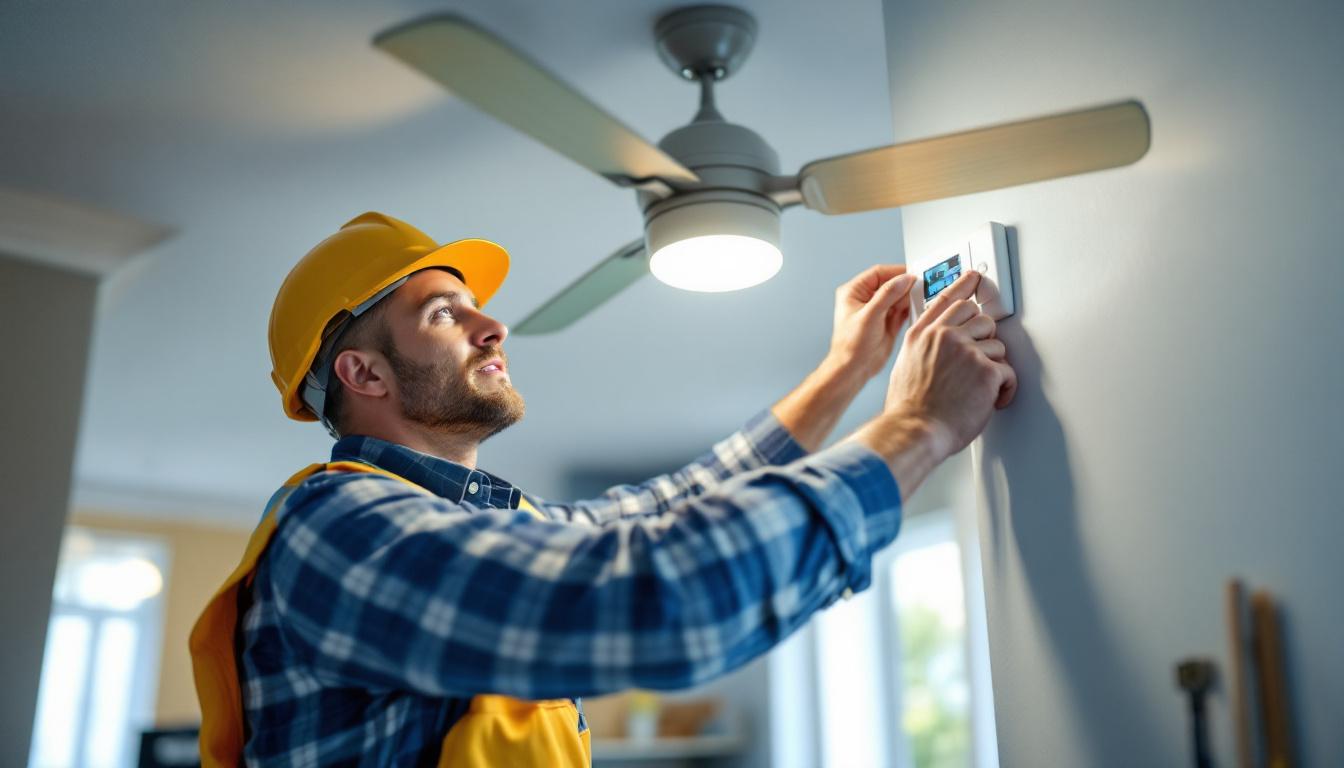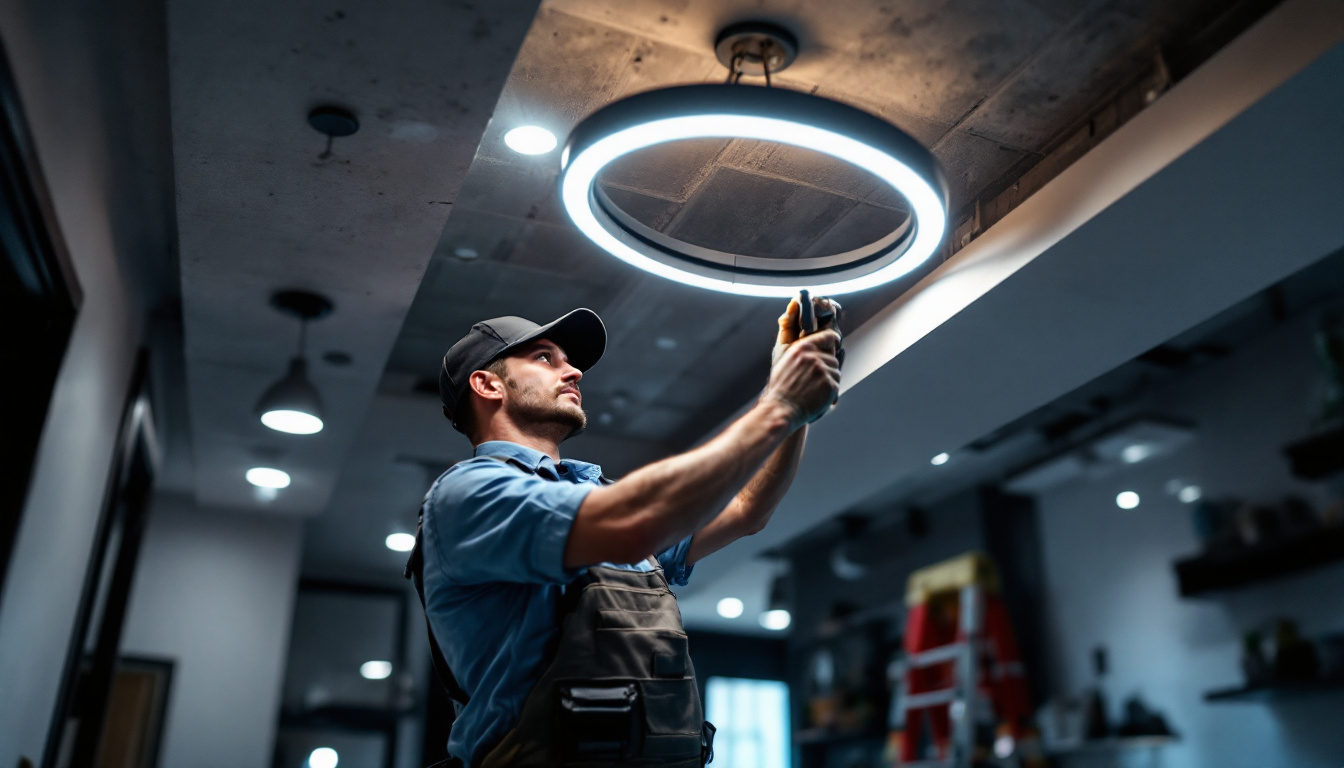
For lighting contractors, ceiling fan installations represent a significant opportunity to enhance both comfort and energy efficiency in residential and commercial spaces. However, the choice of ceiling fan controls can dramatically influence the overall cost-effectiveness of these installations. Efficient controls not only improve user experience but also contribute to reducing energy consumption, which is increasingly important as clients seek sustainable solutions.
Ceiling fans, when paired with the right control systems, can reduce reliance on air conditioning by circulating air effectively. This synergy between fans and HVAC systems can lead to substantial energy savings. According to energy efficiency studies, ceiling fans can reduce cooling costs by up to 40% when used correctly. Therefore, lighting contractors who understand and implement cost-saving control strategies stand to deliver greater value to their clients while optimizing their project budgets.
Moreover, the integration of smart technology into ceiling fan controls has revolutionized the way users interact with their home environments. Smart ceiling fan controls allow users to adjust fan speed, direction, and even lighting through mobile apps or voice commands, providing unparalleled convenience. This technology not only enhances user satisfaction but also enables better energy management, as users can monitor and adjust their settings in real-time, ensuring that fans are only used when necessary. As the demand for smart home solutions continues to rise, lighting contractors who offer these advanced control options can position themselves as leaders in the market.
Additionally, it is essential to consider the aesthetic and functional aspects of ceiling fan controls. Modern designs often feature sleek interfaces and customizable settings that blend seamlessly with contemporary interiors. This attention to detail can significantly impact a client’s decision-making process, as they are likely to favor installations that enhance the overall look and feel of their spaces. By educating clients on the benefits of various control options, including remote controls, wall switches, and smart integrations, contractors can help them make informed choices that align with their lifestyle and design preferences.
Traditional pull chain controls are common in many ceiling fan installations due to their simplicity and low upfront cost. However, they can be less convenient for users and may lead to inefficient fan operation, such as running at full speed unnecessarily. Wall controls, on the other hand, offer enhanced usability and can be integrated with lighting controls, providing a more streamlined user experience. This integration allows homeowners to manage both their lighting and airflow from a single location, reducing the need for multiple switches and enhancing the overall aesthetic of the room.
From a cost-saving perspective, wall controls often justify their higher initial investment by enabling better energy management. For example, multi-speed wall controls allow users to adjust fan speed precisely, reducing energy consumption during lower demand periods. Additionally, wall controls can be combined with dimmers for ceiling fan lights, offering further energy savings without compromising comfort. Furthermore, the ability to set timers or schedules with wall controls can prevent fans from running unnecessarily when the room is unoccupied, which is particularly beneficial in larger homes where energy efficiency is a priority.
Remote controls have become increasingly popular, offering convenience and flexibility. While they may add to the installation cost, their ability to provide multiple speed settings and lighting options without rewiring can reduce labor expenses. Moreover, smart ceiling fan controls that integrate with home automation systems enable scheduling, occupancy sensing, and voice commands, all of which contribute to energy efficiency. This level of control not only enhances user convenience but also aligns with the growing trend of smart home technology, making it easier for homeowners to manage energy consumption across various devices.
Smart controls also facilitate data collection on usage patterns, allowing contractors and clients to fine-tune fan operation for maximum savings. By analyzing this data, users can identify peak usage times and adjust their settings accordingly, ensuring that energy is not wasted during periods of inactivity. Though the initial cost is higher, the long-term energy savings and enhanced client satisfaction often outweigh the investment. Additionally, as more consumers become environmentally conscious, the appeal of energy-efficient solutions like smart ceiling fan controls is likely to grow, making them a wise choice for future-proofing home installations.
Lighting contractors must prioritize LED-compatible ceiling fan light kits to maximize energy savings. LEDs consume significantly less power than traditional incandescent or halogen bulbs and have longer lifespans, reducing maintenance costs. Integrating LED lighting with ceiling fans ensures that both lighting and airflow contribute to overall energy efficiency.
When selecting LED-compatible fan controls, it is essential to ensure dimmer compatibility to avoid flickering or reduced bulb life. Modern dimmers designed specifically for LED loads can provide smooth dimming and additional energy savings by allowing users to adjust light levels according to need. Additionally, many LED bulbs now come with color temperature options, enabling users to choose between warm and cool lighting, which can enhance the ambiance of a room while further optimizing energy use.
Providing separate controls for the fan and light functions enhances energy management. Users can operate the fan without the light or vice versa, preventing unnecessary energy use. For instance, in a room where natural light suffices during the day, the fan can run independently, reducing lighting energy consumption.
Lighting contractors should consider installing dual control systems or smart controls that allow independent operation. This flexibility not only improves user satisfaction but also aligns with energy-saving goals. Smart home technology can take this a step further by enabling remote access and automation, allowing users to schedule fan and light operations based on their daily routines or even adjust settings from their smartphones. Such advancements not only contribute to energy efficiency but also enhance the overall convenience and comfort of living spaces.
Effective planning and pre-wiring can significantly reduce installation time and labor costs. Lighting contractors should assess the site thoroughly to determine the most efficient wiring routes and control placements. Pre-wiring for wall controls or smart systems during initial construction or renovation phases avoids costly retrofits.
Furthermore, specifying control systems that are compatible with existing wiring infrastructure can prevent additional expenses. For example, using controls that operate on standard line voltage rather than requiring low-voltage wiring simplifies installation and reduces material costs. This approach not only minimizes the complexity of the installation but also enhances the overall reliability of the system, as standard components are typically more readily available and easier to replace if needed.
In addition to these considerations, contractors should also take into account the future scalability of the installation. By planning for potential expansions or upgrades, such as additional lighting fixtures or advanced control systems, contractors can avoid the need for extensive rework later. Incorporating flexible wiring solutions that allow for easy modifications can be a strategic move, ensuring that the installation remains relevant and functional as technology evolves.
Standardizing ceiling fan controls across multiple projects or within a single building can streamline procurement and installation processes. Bulk purchasing of compatible control units often results in cost savings through volume discounts. Additionally, familiarity with a standardized system reduces installation errors and training time for contractors and electricians.
Standardization also benefits clients by simplifying maintenance and replacements, which can reduce long-term operational costs. When a uniform control system is in place, it becomes easier for maintenance staff to troubleshoot issues quickly, as they will be well-versed in the specific controls used throughout the facility. This consistency can lead to faster response times and less downtime for critical systems, ultimately enhancing the overall efficiency of building operations.
Moreover, adopting standardized control systems can also foster innovation. As manufacturers recognize the demand for specific types of controls, they may invest in developing more advanced features or energy-efficient technologies tailored to those standards. This can lead to improved performance and lower energy consumption, aligning with sustainability goals while also providing cost savings over time. By embracing standardization, contractors and clients alike can position themselves at the forefront of industry advancements, ensuring their installations remain competitive and effective.
Many utility companies and government agencies offer rebates and incentives for installing energy-efficient ceiling fan controls and LED lighting. Lighting contractors should stay informed about available programs in their regions to advise clients accordingly. These incentives can offset the initial costs of advanced control systems, making them more attractive to clients.
For example, rebates for smart thermostats and controls often extend to smart ceiling fan controls when integrated into broader HVAC management systems. By combining ceiling fan controls with other energy-saving measures, contractors can help clients maximize financial benefits.
Proper documentation of installed equipment and compliance with program requirements are essential to secure rebates. Lighting contractors should maintain detailed records of control types, installation dates, and energy savings estimates. This diligence not only facilitates rebate applications but also enhances contractor credibility and client trust.
Continuous education is vital for lighting contractors aiming to implement cost-saving strategies effectively. The ceiling fan control market evolves rapidly, with new technologies and standards emerging regularly. Attending industry workshops, webinars, and manufacturer training sessions ensures contractors remain knowledgeable about the latest products and best practices.
Additionally, staying updated on energy codes and regulations helps contractors design compliant and efficient systems. For instance, some jurisdictions have specific requirements for fan control efficiency and lighting power density that directly impact project specifications and costs.
Ceiling fan controls are a critical component of energy-efficient lighting and comfort solutions. For lighting contractors, adopting cost-saving strategies in selecting, installing, and managing these controls can lead to significant benefits for both clients and their own businesses. By choosing appropriate control types, integrating energy-efficient lighting, planning installations carefully, leveraging incentives, and committing to ongoing education, contractors can deliver superior value and foster long-term client satisfaction.
Ultimately, the combination of smart technology and thoughtful implementation positions lighting contractors as essential partners in sustainable building practices, driving energy savings and enhancing occupant comfort in every project.
Ready to elevate your lighting projects with the most cost-effective and energy-efficient ceiling fan controls? Look no further than LumenWholesale, where we provide contractors with the highest quality, spec-grade lighting products at unbeatable wholesale prices. Say goodbye to the middleman and hello to superior lighting solutions that meet the highest industry standards. With our hassle-free bulk buying options and free shipping, you can ensure your projects shine with premium lighting at the best value. Don’t compromise on quality or cost—visit LumenWholesale today and experience the ideal combination of quality, affordability, and convenience for all your lighting needs.

Discover how outdoor flood light fixtures can enhance your business profits with our comprehensive guide tailored for lighting contractors.

Discover the surprising resources and innovations Thomas Edison utilized to create the light bulb and learn why understanding these historical insights is essential for every modern lighting contractor..

Illuminate your outdoor spaces with expert insights from lighting contractors on solar patio lamps.

Discover how goof rings for recessed lighting can transform your projects and elevate your business.